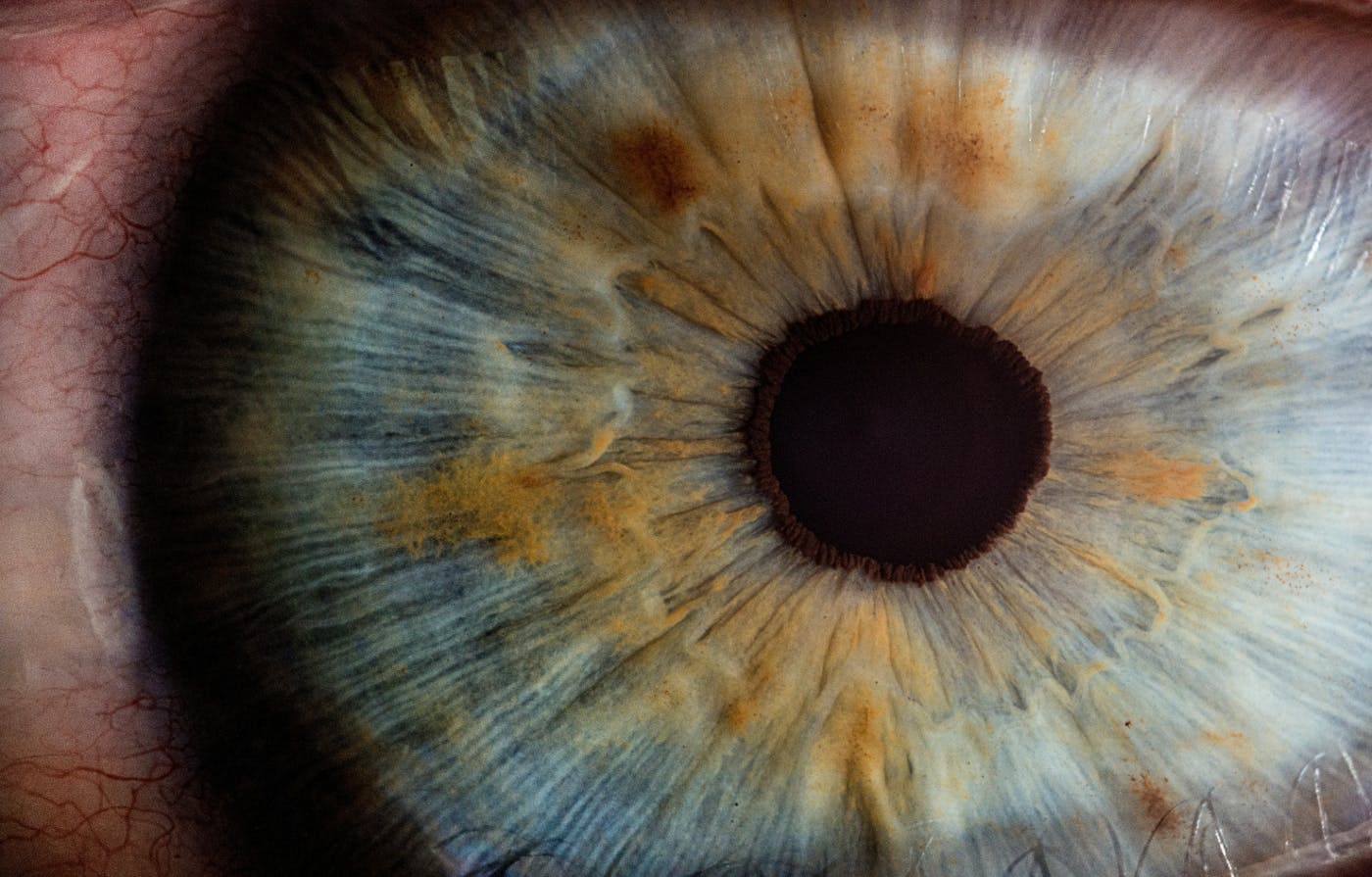
Let’s explore the fascinating realm of UX and the psychology of first impressions, shedding light on how design influences initial judgments and decision-making processes.
In today's digital age, websites are not merely information portals but interactive platforms that instantly shape user perceptions. The user experience (UX) plays a pivotal role in determining how visitors perceive a website's trustworthiness, credibility, and overall appeal. Let’s explore the fascinating realm of UX and the psychology of first impressions, shedding light on how design influences initial judgments and decision-making processes.
Visual Elements: Setting the Stage for Perception
When you land on a website, what's the first thing that catches your eye? Is it the color scheme that whispers soothingly or screams for attention? The typography that speaks volumes about the brand's personality? Or perhaps it's the layout that guides your gaze effortlessly through the digital landscape?
Color Psychology
They say colors speak louder than words. It's not just about aesthetics; it's about emotions. Warm hues like oranges and reds evoke passion and urgency, perfect for a call to action. Cool blues and greens breathe calmness and trust, ideal for financial institutions and health websites. And let's not forget about the timeless elegance of black and white—simplicity at its finest, making everything else pop.
Typography Matters
Fonts aren't just pretty letters; they're personality in every stroke. Serif fonts exude tradition and reliability, perfect for those serious law firms or scholarly blogs. Sans-serif, on the other hand, whispers modernity and simplicity, making tech startups and lifestyle blogs feel right at home. And then there's the quirky world of display fonts—loud, proud, and unapologetically unique, like that avant-garde artist who refuses to conform.
Layout and Flow
Ever stumbled upon a website where finding the contact button feels like solving a Rubik's cube blindfolded? That's bad UX, my friend. A well-thought-out layout guides your journey smoothly, from the hero banner that shouts "Welcome!" to the footer that discreetly nudges you towards social proof and FAQs. It's about creating a path of least resistance, where every click feels like a step in the right direction.
Design isn't just about looking good; it's about feeling right. It's about setting the stage for trust, credibility, and that elusive "I'm in the right place" feeling. In the theater of web design, visual elements are the actors, and their performance sets the tone for the entire user experience.
Navigation and Accessibility: The Roadmap to User Satisfaction
Imagine driving down a road with no signs, no lanes, just chaos. That's what bad navigation feels like on a website—confusing, frustrating, and likely to send visitors clicking away faster than you can say "404 Error." Good navigation is like a well-planned road trip: clear signs, smooth lanes, and maybe a few scenic detours to keep things interesting.
Intuitive Navigation
Ah, the sweet joy of finding exactly what you need with minimal effort. That's the magic of intuitive navigation. It's about organizing content logically, with menus that make sense and labels that speak the user's language. Dropdowns that drop exactly where you expect them to, search bars that actually find what you're looking for, and breadcrumbs that lead you back home when you wander too far. It's the little things that make a big difference.
Mobile Responsiveness
We live in the age of smartphones and tablets—tiny screens with big expectations. Responsive design isn't just a buzzword; it's a survival skill. Your website should look as good on a phone as it does on a desktop, without making users zoom, squint, or curse their thumbs. It's about flexing those design muscles to adapt gracefully to every screen size, because no one likes a website that's all thumbs and no finesse.
Accessibility for All
Remember, not everyone experiences the web in the same way. Accessibility isn't just about compliance; it's about inclusivity. It's about designing for the elderly grandparent who struggles with small fonts, the color-blind designer who sees the world in a different palette, and the keyboard wizard who navigates with ease but can't click a mouse. It's about making sure everyone can access your content, regardless of ability or device.
Navigation and accessibility are the unsung heroes of UX design, quietly guiding users through the digital maze and ensuring everyone feels welcome. Because in the end, a website that's easy to navigate is a website that's easy to love.

Responsive Design: Flexibility Across Devices
In today's digital ecosystem, your website isn't just a pretty face—it's a chameleon. It needs to adapt seamlessly to whatever device your users choose, from towering desktop monitors to pocket-sized smartphones. That's where responsive design swoops in like a superhero cape, saving the day with its flexibility and flair.
Adaptive Layouts
Picture this: your website effortlessly reshapes itself like a Transformer, adjusting columns, resizing images, and repositioning elements to fit the screen like a custom-tailored suit. No more horizontal scrolling marathons or pinching and zooming acrobatics. Responsive design ensures that every pixel shines, whether it's a sleek widescreen display or a compact handheld device.
Fluid Grids and Media Queries
Beneath the surface, responsive design relies on fluid grids and cunning media queries. It's all about percentages and breakpoints, where elements gracefully flow and rearrange based on screen size. This mathematical wizardry ensures that your content remains cohesive and captivating, no matter the dimensions.
User Experience Harmony
Imagine visiting a website on your phone, and it looks just as polished and professional as it does on your desktop. That's the magic of responsive design—it creates harmony across devices, fostering a consistent brand experience and keeping users engaged from couch to commute.
Responsive design isn't just a trend; it's a necessity in the era of multi-device browsing. By embracing flexibility and ensuring a seamless user experience, your website becomes more than just accessible—it becomes indispensable.
Trust and Credibility Factors: Building Digital Rapport
In the vast landscape of the internet, trust is the currency that fuels user engagement and loyalty. Building credibility isn't just about what you say; it's about how your website makes users feel. Let's explore the essential ingredients for creating digital rapport and fostering trustworthiness.
Design Consistency
Ever visited a website where each page feels like a different chapter in a choose-your-own-adventure book? Consistency is key to building trust. From colors and fonts to layouts and navigation menus, a cohesive design tells users that they're in capable hands. It's about creating a familiar environment where visitors feel confident and comfortable exploring.
Security Signals
In the age of data breaches and phishing scams, visual cues play a crucial role in reassuring users about their safety. Trust badges, SSL certificates, and padlock icons signal that your website takes security seriously. It's like a digital handshake—a visual confirmation that their information is safe and their privacy respected.
Social Proof
Humans are social creatures, and we often look to others for validation. Testimonials, client logos, user reviews, and case studies act as digital endorsements, showcasing your credibility through the eyes of satisfied customers. It's not just about what you say about yourself; it's about what others say about you that matters most.
Trust and credibility are built through a combination of design elements, security measures, and social validation. By creating a consistent, secure, and socially endorsed environment, your website becomes a trusted ally in the digital realm.

Decision-Making Processes: Guiding User Actions
Behind every click, scroll, and conversion on a website lies a complex interplay of psychology, design, and user behavior. Understanding how design influences decision-making processes is key to creating engaging and effective digital experiences. Let's explore the science behind guiding user actions through persuasive design.
User Behavior Analysis
Ever wonder why some buttons are green and others are red? It's not just a random choice; it's psychology at play. Color psychology, placement of elements, and even the wording of call-to-action buttons can significantly impact user decisions. Heatmaps, click-through rates, and user journey analysis provide insights into where users linger, what catches their eye, and where they drop off.
Psychological Triggers
Humans are wired to respond to certain cues—urgency, scarcity, social proof, and reciprocity, to name a few. Design elements like countdown timers, limited-time offers, testimonials, and personalized recommendations tap into these psychological triggers, nudging users towards desired actions. It's the art of persuasion without the pushy sales pitch.
Illustrative Examples
Take Airbnb, for instance, which saw a significant increase in bookings after implementing a dynamic pricing feature showing real-time views. This created urgency and social proof, prompting users to book faster. Similarly, Amazon's "Customers Who Bought This Item Also Bought" section drives additional purchases by suggesting products based on previous buying patterns, leveraging personalized recommendations.
Understanding the psychology of decision-making empowers designers to craft experiences that resonate with users on a deeper level. By leveraging psychological triggers and insights from user behavior, websites can become not just functional tools but persuasive allies in achieving business goals.
Ethical Considerations in UX Design: Balancing Impact and Responsibility
In the fast-paced world of digital design, creating compelling user experiences goes hand in hand with ethical responsibility. As designers, we wield immense power to shape user behavior and perceptions. Let's delve into the ethical considerations that guide us towards creating inclusive, respectful, and transparent digital interactions.
Dark Patterns
Imagine navigating a website maze where every exit seems to lead back to the same frustrating loop—a classic dark pattern. These deceptive design tactics manipulate users into actions they didn't intend, from sneaky opt-out checkboxes to misleading urgency cues. Ethical UX design prioritizes clarity and honesty, ensuring users make informed choices without feeling tricked or coerced.
User Privacy
In an era dominated by data breaches and privacy concerns, safeguarding user information is non-negotiable. Transparent privacy policies, clear consent mechanisms, and secure data handling practices build trust and respect user autonomy. Ethical designers prioritize user privacy from the initial design phase to ongoing maintenance, respecting boundaries and fostering long-term relationships based on trust.
Accessibility
The digital landscape should be inclusive, not exclusive. Ethical UX design embraces accessibility standards, ensuring that all users, regardless of abilities, can navigate and interact with digital content seamlessly. From screen readers and keyboard navigation to color contrast and text size options, accessibility enhancements empower every user to engage fully with online experiences.
Navigating ethical considerations in UX design isn't just about compliance—it's about integrity and empathy. By championing transparency, privacy, and accessibility, designers can create digital environments that prioritize user well-being and foster meaningful connections.

User Feedback and Iterative Improvement: Evolving with User Needs
Designing a successful website isn't a one-and-done affair; it's an ongoing journey of refinement and evolution. User feedback plays a pivotal role in shaping digital experiences that resonate and adapt to changing user preferences. Let's explore how incorporating user feedback and iterative improvement can elevate UX design.
Feedback Loops
Listening to your users is the secret sauce of exceptional UX design. Feedback loops, through surveys, usability testing, and customer support interactions, provide invaluable insights into pain points, preferences, and opportunities for enhancement. It's about bridging the gap between design intent and user experience, ensuring your website evolves in alignment with user expectations.
Iterative Design
Rome wasn't built in a day, and neither is a user-friendly website. Iterative design involves refining and optimizing features based on real-world usage data and user feedback. A/B testing different layouts, tweaking navigation flows, and experimenting with content presentation allow designers to fine-tune every interaction, making incremental improvements that add up to a superior user experience.
Continuous Learning
The digital landscape is ever-changing, and so are user behaviors and expectations. Ethical UX designers embrace a culture of continuous learning and adaptation. Staying updated with industry trends, technological advancements, and emerging user preferences ensures your website remains relevant and competitive in a dynamic digital ecosystem.
By embracing user feedback and adopting an iterative approach to design, websites can evolve from good to exceptional, fostering long-term user engagement and loyalty.
Emotional Design: Crafting Memorable User Experiences
Beyond functionality and aesthetics, great websites evoke emotions that resonate with users on a deeper level. Emotional design taps into the human psyche, creating memorable experiences that leave a lasting impression. Let's explore how emotional design elements can elevate UX and foster meaningful connections.
Storytelling through Design
Every brand has a story to tell, and your website is the digital stage where narratives unfold. Through compelling visuals, engaging narratives, and interactive elements, storytelling captivates users and forges emotional bonds. Whether it's a journey of discovery or a tale of transformation, effective storytelling builds empathy and connection.
Delightful Interactions
Ever encountered a website feature that made you smile or sparked curiosity? Delightful interactions surprise and engage users, turning mundane tasks into memorable experiences. From animated micro-interactions to playful Easter eggs, these moments of delight create positive associations and enhance user satisfaction.
Brand Personality
Your website is more than pixels and code; it's the digital embodiment of your brand's personality. Consistent tone of voice, visual style, and interactive behaviors convey authenticity and build brand identity. Whether it's conveying professionalism through sleek design or exuding warmth with friendly language, aligning design with brand personality cultivates trust and loyalty.
Emotional design transforms digital interactions into meaningful connections, shaping how users perceive and engage with your brand. By crafting experiences that resonate emotionally, websites can inspire, motivate, and leave a lasting impression.
Visual Hierarchy and Information Architecture: Guiding User Attention
In the vast expanse of the internet, clarity is king. Visual hierarchy and information architecture are the architects of user experience, guiding visitors through a seamless journey of discovery and interaction. Let's explore how strategic design decisions can prioritize content, streamline navigation, and enhance usability.
Hierarchy of Importance
Have you ever noticed how your eyes instinctively gravitate toward bold headlines or vibrant images? That's the magic of visual hierarchy. By strategically using size, color, contrast, and spacing, designers can emphasize key messages and guide users toward desired actions. Clear focal points and structured layouts reduce cognitive load, making it easier for users to absorb information and navigate your website effortlessly.
Navigation Simplification
Navigating a complex website should feel like strolling through a well-marked city. Intuitive navigation menus, breadcrumbs, and search functionalities act as signposts, helping users find their way around with minimal effort. Information architecture organizes content logically, ensuring that every click leads to relevant, valuable information without confusion or frustration.
Whitespace and Breathing Room
Imagine reading a dense block of text versus one with ample whitespace around paragraphs and images. Whitespace isn't just empty space; it's a visual breath that enhances readability and comprehension. Thoughtfully incorporating whitespace around elements allows content to shine and improves overall user experience by reducing visual clutter.
Visual hierarchy and information architecture are the unsung heroes of UX design, silently guiding users through digital landscapes and ensuring every interaction feels intuitive and rewarding. By prioritizing clarity, simplicity, and user-centric design principles, websites can captivate attention and foster engagement effectively.

Summing Up: Crafting User-Centric Digital Experiences
Throughout this journey into the realm of UX design, we've explored how websites serve as digital ambassadors, shaping user perceptions and behaviors from the moment they land on a page. From the strategic use of visual hierarchy to the ethical considerations in design, each element plays a crucial role in creating user-centric digital experiences.
Effective UX design isn't just about aesthetics or functionality—it's about understanding and meeting user needs. By prioritizing trust and credibility, guiding decision-making processes, and embracing ethical standards, websites can build meaningful connections and foster long-term relationships with users.
At ThoughtLab, we believe in the power of design to elevate digital spaces and enhance user experiences. Whether it's through storytelling, delightful interactions, or intuitive navigation, our goal is to create websites that not only meet but exceed user expectations. By continually refining and iterating based on user feedback and emerging trends, we ensure our designs remain relevant and impactful in a rapidly evolving digital landscape.
As we look towards the future of UX design, let's continue to innovate, inspire, and deliver experiences that delight and engage users on every digital journey.

